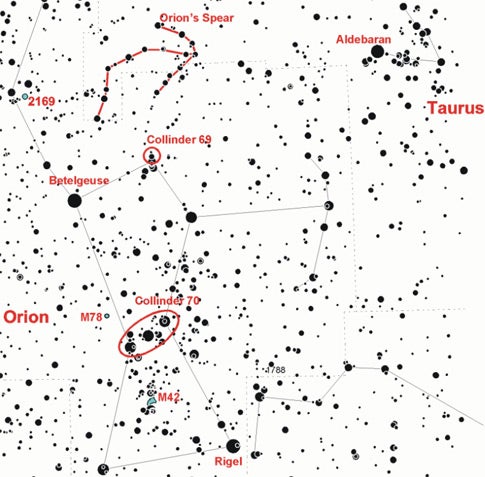Mintaka, the westernmost belt star, is a wide, bright double star tailor made for binoculars. Binoculars will unveil a 2nd-magnitude primary paired with a 6th-magnitude companion. Both shine perfectly white.
The reflection nebula M78 is found about 3.5° due east of Mintaka. Its shape reminds me of a comet. Two faint stars located within the “head” of this false comet give the impression of twin nuclei, while the nebula’s “tail” fans out toward the southeast.
Find NGC 2169 quite easily to the southeast of the midpoint between Nu (ν) Orionis and Xi (ξ) Orionis in the Hunter’s raised right arm. This small, bright open cluster contains about 30 stars ranging from magnitudes 8 to 10. Binoculars reveal the four brightest cluster members buried in a faint, misty glow. And while you’re in the area, be sure to scan the richness of the surrounding Milky Way star fields.










